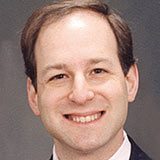DoubleLine Capital was founded in late 2009 by Jeffrey Gundlach, one of the most celebrated bond investors ever, points out Mark Salzinger of No-Load Fund Investor.
Attracted to Gundlach's record and reputation, investors hungry for yield have entrusted DoubleLine with more than $57 billion.
Together with other members of the senior investment team now at DoubleLine, Gundlach managed or oversaw more than $70 billion in fixed-income assets at TCW, where he was most famous for guiding the TCW Total Return Fund (TGMNX) from 1993 through 2009.
In the final five years of his tenure there, TCW Total Return produced a cumulative total return of 38.5%, versus 27.4% for the Barclays Aggregate Bond Index and 19.4% for the average taxable intermediate-term bond fund.
Despite substantial controversy upon leaving TCW, Gundlach has continued to thrive since launching his own firm and eventually bringing many of his former colleagues with him.
In the three-year period ended August 30, 2013, the N class of his flagship fund, DoubleLine Total Return (DLTNX), generated an annualized total return of 6.8%, versus 2.6% for the Barclays Aggregate.
Gundlach manages DoubleLine Total Return with Philip Barach, with whom he worked on the TCW equivalent fund for nearly his entire tenure.
Gundlach believes that the best way to achieve superior risk-adjusted returns over time from the bond market is to exploit inefficiencies in the mortgage markets, especially via non-agency mortgages.
As opposed to agency mortgages (e.g. GNMA, FNMA), the principal and interest of which is essentially guaranteed by the US government, non-agency mortgages have no government backing.
Therefore, combinations (called pools in the mortgage business) of non-agency mortgages have considerably higher yields and are relatively difficult to analyze.
Because they are priced in the market as if some mortgages will default, the trick to success is to buy specific pools with default rates about which other investors are too pessimistic.
In other words, if fewer of a pool's mortgages are defaulted on than the market expects, the price of the pool will rise. Therefore, in addition to attractive interest, non-agency mortgage backed securities can provide significant potential for capital gains—so long as an expert like Gundlach is selecting them.
This was apparent during the financial crisis, actually fomented by the real estate market, during which TCW Total Return performed better than its most similar peers, not just during the difficult investment environment of 2008, but also during the snapback year of 2009.
To manage risk, Gundlach combines exposure to non-agency mortgages, with considerable positions in agency mortgage-backed securities.
While a stronger economy might cause interest rates to rise, hurting agency mortgage-backed securities, it would probably decrease default rates and thus might even help the prices of non-agency mortgages. On the other hand, the government-backed mortgages would likely perform better in a weakening economy.
So, while he is careful to maintain exposure to both investment areas, Gundlach manages exposure such that, at times of high perceived credit risk, he favors non-agency mortgages, while during times of high perceived interest rate risk, he favors agency mortgages.
This contrarian mindset is one factor behind the above-average returns he has generated throughout the bulk of his career.
As of July 31, DoubleLine Total Return actually had more exposure to the agency markets than to non-agency. The fund had 47% of assets in agency mortgages, along with 5% in US Treasuries and nearly 12% in cash.
Non-agency mortgage products accounted for about a third of assets. Securities with credit ratings of below investment grade accounted for about a quarter of total assets. Duration, a measure of sensitivity to changes in interest rates, was moderate (on the shorter end of the intermediate range).
DoubleLine also attempts to produce returns through sub-sector selection, as well as superior selection of individual securities. The company has more than 100 team members, including 65 investment professionals.
The N class has a minimum of $2,000 and an expense ratio of 0.73%. The SEC yield is 4.13%. Through August 30, the fund has lost 1.1% in 2013, versus a loss of 2.8% for the Barclays Aggregate.
Subscribe to No-Load Fund Investor here…
More from MoneyShow.com:
Calamos: A Convertible Opportunity


















